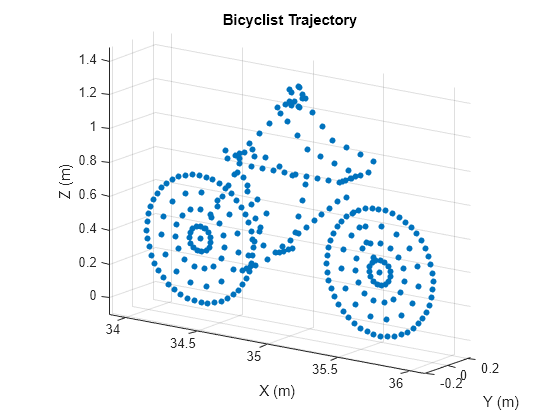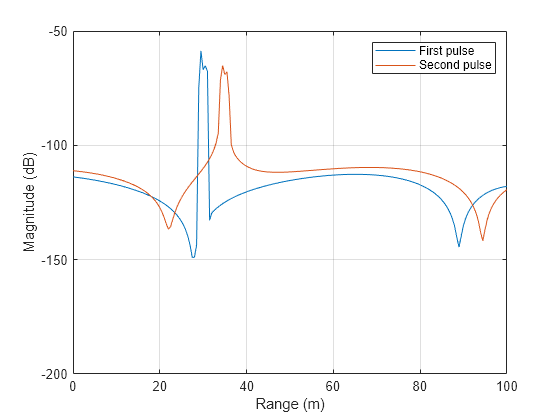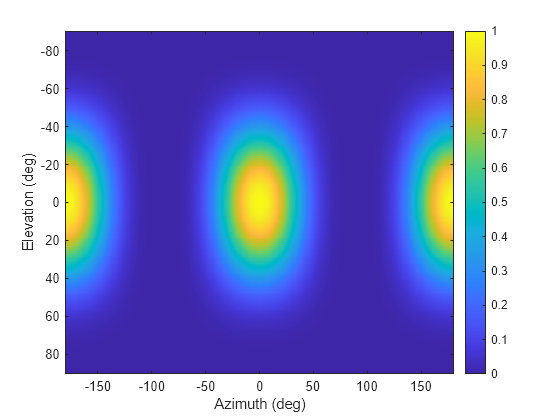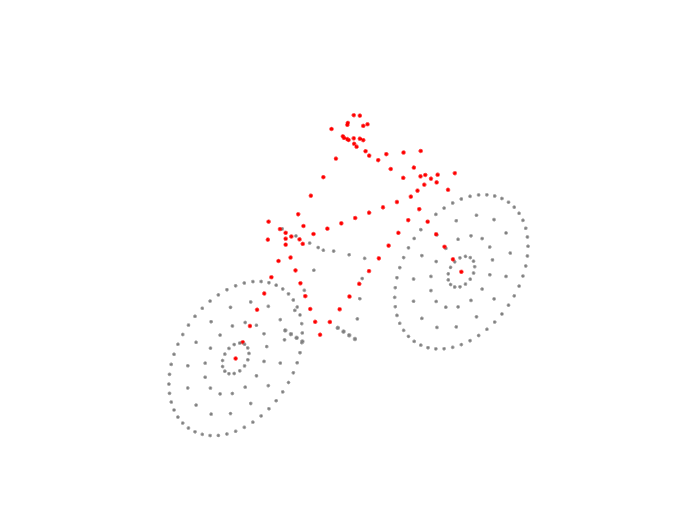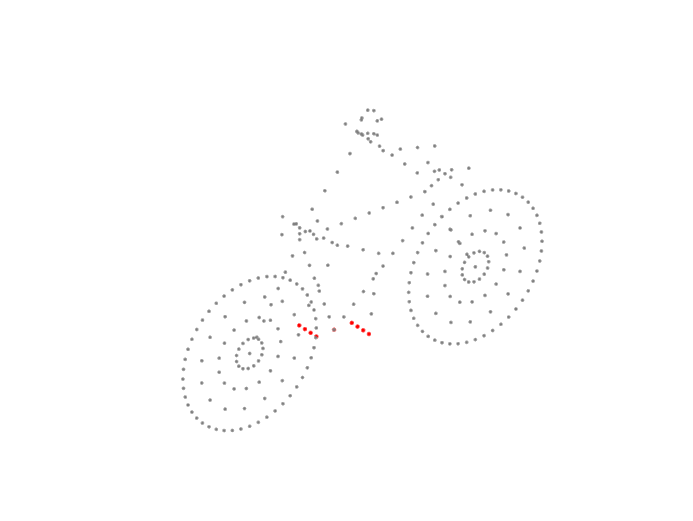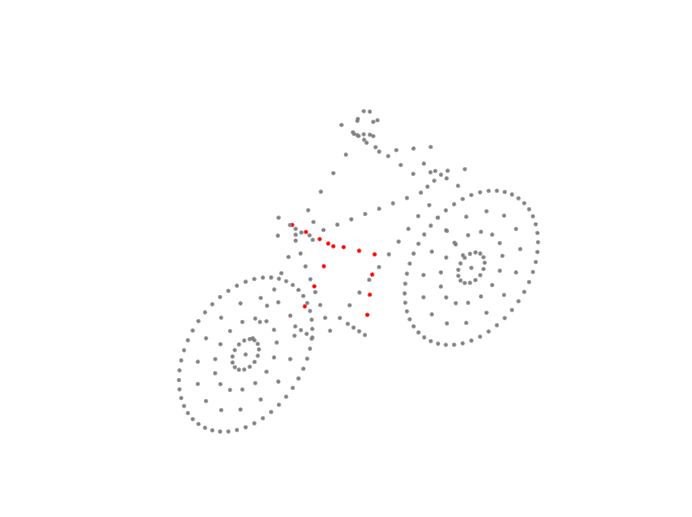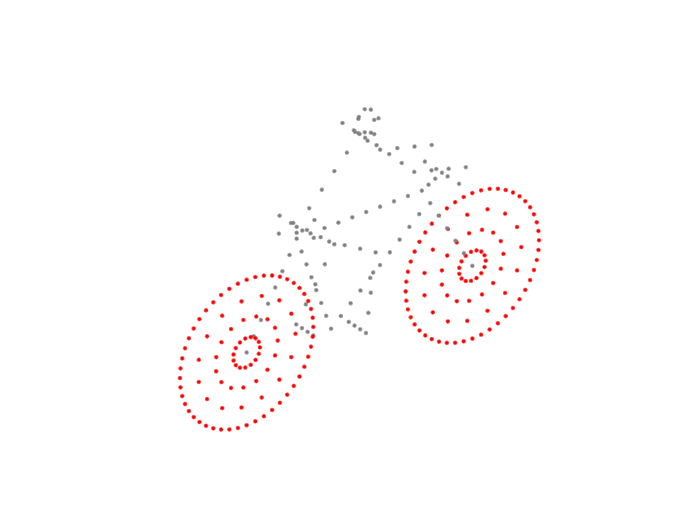backscatterBicyclist
Description
The backscatterBicyclist object simulates backscattered radar signals
reflected from a moving bicyclist. The bicyclist consists of both the bicycle and its rider.
The object models the motion of the bicyclist and computes the sum of all reflected signals
from multiple discrete scatterers on the bicyclist. The model ignores internal occlusions
within the bicyclist. The reflected signals are based on a multi-scatterer model developed
from a 77 GHz radar system.
Scatterers are located on five major bicyclist components:
Bicycle frame and rider
Bicycle pedals
Upper and lower legs of the rider
Front wheel
Back wheel
Excluding the wheels, there are 114 scatterers on the bicyclist. The wheels
contain scatterers on the rim and spokes. The number of scatterers on the wheels depends on
the number of spokes per wheel. The number of spokes is specified using the
NumWheelSpokes property.
You can obtain the current bicyclist position and velocity by calling the move object
function. Calling this function also updates the position and velocity for the next time
epoch. To obtain the reflected signal, call the reflect object
function. You can plot the instantaneous position of the bicyclist using the plot object
function.
Creation
Syntax
bicyclist = backscatterBicyclist
bicyclist = backscatterBicyclist(Name,Value,...)
Description
bicyclist = backscatterBicyclistbackscatterBicyclist object, bicyclist, having
default property values.
bicyclist = backscatterBicyclist(Name,Value,...)backscatterBicyclist object, bicyclist, with
each specified property Name set to the specified
Value. You can specify additional name-value pair arguments in any
order as
(Name1,Value1,...,NameN,ValueN).
Any unspecified properties take default values. For
example,
bicyclist = backscatterBicyclist( ...
'NumWheelSpokes',18,'Speed',10.0, ...
'InitialPosition',[0;0;0],'InitialHeading',90, ...
'GearTransmissionRatio',5.5);This figure illustrates a bicyclist starting to turn left.

Properties
Object Functions
Examples
Algorithms
References
[1] Stolz, M. et al. "Multi-Target Reflection Point Model of Cyclists for Automotive Radar." 2017 European Radar Conference (EURAD), Nuremberg, 2017, pp. 94–97.
[2] Chen, V., D. Tahmoush, and W. J. Miceli. Radar Micro-Doppler Signatures: Processing and Applications. The Institution of Engineering and Technology: London, 2014.
[3] Belgiovane, D., and C. C. Chen. "Bicycles and Human Rider Backscattering at 77 GHz for Automotive Radar." 2016 10th European Conference on Antennas and Propagation (EuCAP), Davos, 2016, pp. 1–5.
[4] Victor Chen, The Micro-Doppler Effect in Radar. Norwood, MA: Artech House, 2011.
Extended Capabilities
Version History
Introduced in R2021a

